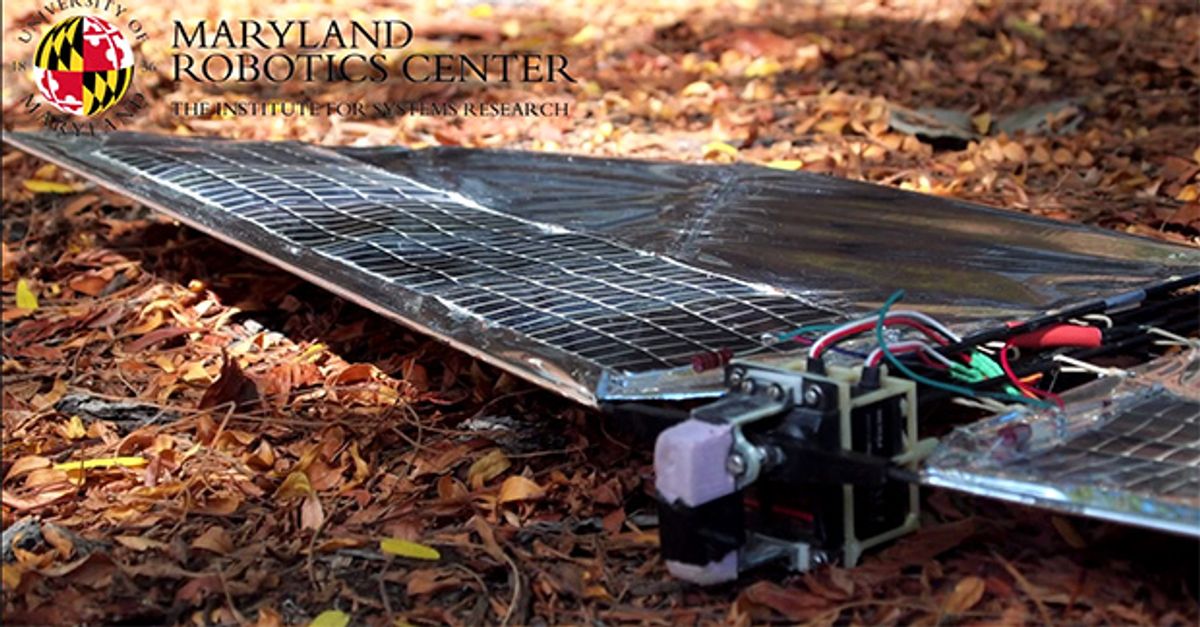In theory, solar power is a great way to keep robots running indefinitely. And it's absolutely possible to do it, provided your robot doesn't need to do anything urgently, you have a ludicrously powerful light source, or your robot is very efficient and spends a lot of time in the sun. That last category has potential for solar powered micro air vehicles, including the University of Maryland's Robo Raven, which has just gotten kitted out with solar panel wings.
UMD professor S.K. Gupta explains how well Robo Raven works with the solar wings:
So how good is the performance? Solar cells currently cover less than half the wing area in Robo Raven III. These solar cells produce 3.6 W of power during a sunny day. The efficiency of these solar cells appears to be around 6 percent, and the combined efficiency of batteries and motors is somewhere between 25 to 50 percent. We hope that the performance will go up significantly as more efficient solar cells become available and we cover more of Robo Raven III’s wing and body area with solar cells in future versions.
Robo Raven's motors currently draw about 30 watts, meaning that the solar power output is an order of magnitude below what would be required to keep the robot aloft indefinitely. Real ravens, of course, rely on foods like meat, which has a crazy high power density:
Nature has a significant edge over engineered system in other areas. For example, 1 gram of meat stores 20 times more energy than 1 gram of the current battery technology. So in terms of the energy density, we engineers have a lot of catching up to do. In nature, solar energy collection devices (e.g., trees) are not on-board ravens. Hence, ravens ultimately utilize a large collection area to gather energy into a highly dense storage source (e.g., meat), giving them a much longer range and better endurance than Robo Raven III.
I think what Dr. Gupta is saying here is that we should just forget solar power entirely and start feeding our robots meat. But until that happens, continuing advances in solar cell technology should allow Robo Raven to at least significantly extend its flying time, if not power itself from the sun completely.
[ Unorthodox Ideas ] via [ UMD ]
Evan Ackerman is a senior editor at IEEE Spectrum. Since 2007, he has written over 6,000 articles on robotics and technology. He has a degree in Martian geology and is excellent at playing bagpipes.



